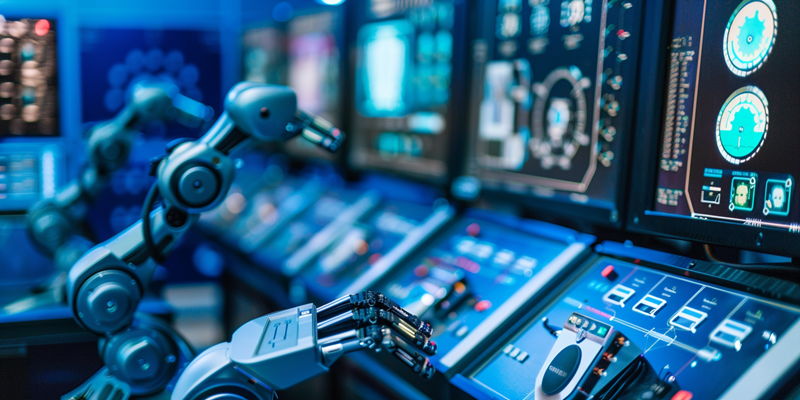The landscape of global industries is undergoing a profound transformation, marked prominently by the ascent of robotic automation. Intertwining cutting-edge technology with the industrial fabric, robotics are sculpting a new era of manufacturing and production. As labor shortages gnaw at the capabilities of businesses and skill gaps loom large, automated robots offer a beacon of relief and progression. They are not transient tools but strategic essentials that are set to redefine efficiency, safety, and adaptability in the forthcoming industrial revolution.
Focusing on the manufacturing sector, where manual labor has been paramount, the rise of robots is a game-changer. No longer constrained by human limitations, robots can tirelessly perform repetitive tasks, operate in hazardous conditions without risk, and maintain unyielding precision. This elevated level of productivity enhances the overall throughput, setting a benchmark for quality that remains consistent irrespective of external factors. Robotics, in many ways, are the panacea for the production ailments of modern industries.
Pioneering Safety and Efficiency
Robotic automation innately carries the promise of safer work environments. Machines designed to execute perilous tasks are now staples in factory settings, ensuring that human workers are reserved for roles that require critical thinking and creativity. The benefit is twofold: a significant reduction in workplace accidents and the reassurance of a workforce that remains undiminished by injury.
Moreover, efficiency gains are paramount when robotics enter the industrial equation. Automated systems excel in minimizing waste and maximizing output, carving a path toward lean manufacturing. With the ability to operate around the clock and adapt quickly to production shifts, robots are the tireless laborers that can meet surging market demands without sacrificing quality.
Charting a Sustainable Path
As green directives take center stage in corporate agendas, robotics align naturally with these eco-conscious aspirations. Advanced automation technology is carving its niche as a vital contributor to sustainability efforts. Robots, with their precision, minimize material waste and energy consumption, inching industries closer to a net-zero carbon footprint.
Sustainable practices further benefit from robotic maintenance capabilities, ensuring equipment operates at peak efficiency and longevity. Such meticulous attention to detail and the predictive capabilities afforded by robotic sensors translate to less redundant manufacturing and a marked decrease in resource depletion. This conscientious approach to production fortifies the position of robotics as a linchpin in the sustainable industry revolution.
The Next Technological Leap
The industrial landscape is being revolutionized by the integration of robotics, a shift that’s particularly noticeable in manufacturing. As businesses grapple with labor shortages and a widening skills gap, robots emerge as a pivotal solution, reshaping productivity, safety, and flexibility in this impending industrial transformation.
Robots are now vital in factories, where they conquer tasks with relentless precision, free from human constraints. They work without pause, brave dangerous environments safely, and deliver unwavering accuracy, driving production to new heights and setting new quality standards.
In this new era, robots aren’t just tools; they’re central to the strategic advancement of industries, promising to usher in unprecedented levels of efficacy. The era where manual labor was dominant is evolving into one where robotic automation leads, promising a more resilient and efficient industrial future.

